Wondering about how to do PIP or pot-in-pot cooking with your instant pot? I have compiled this guide so you can get started and try this amazing technique.
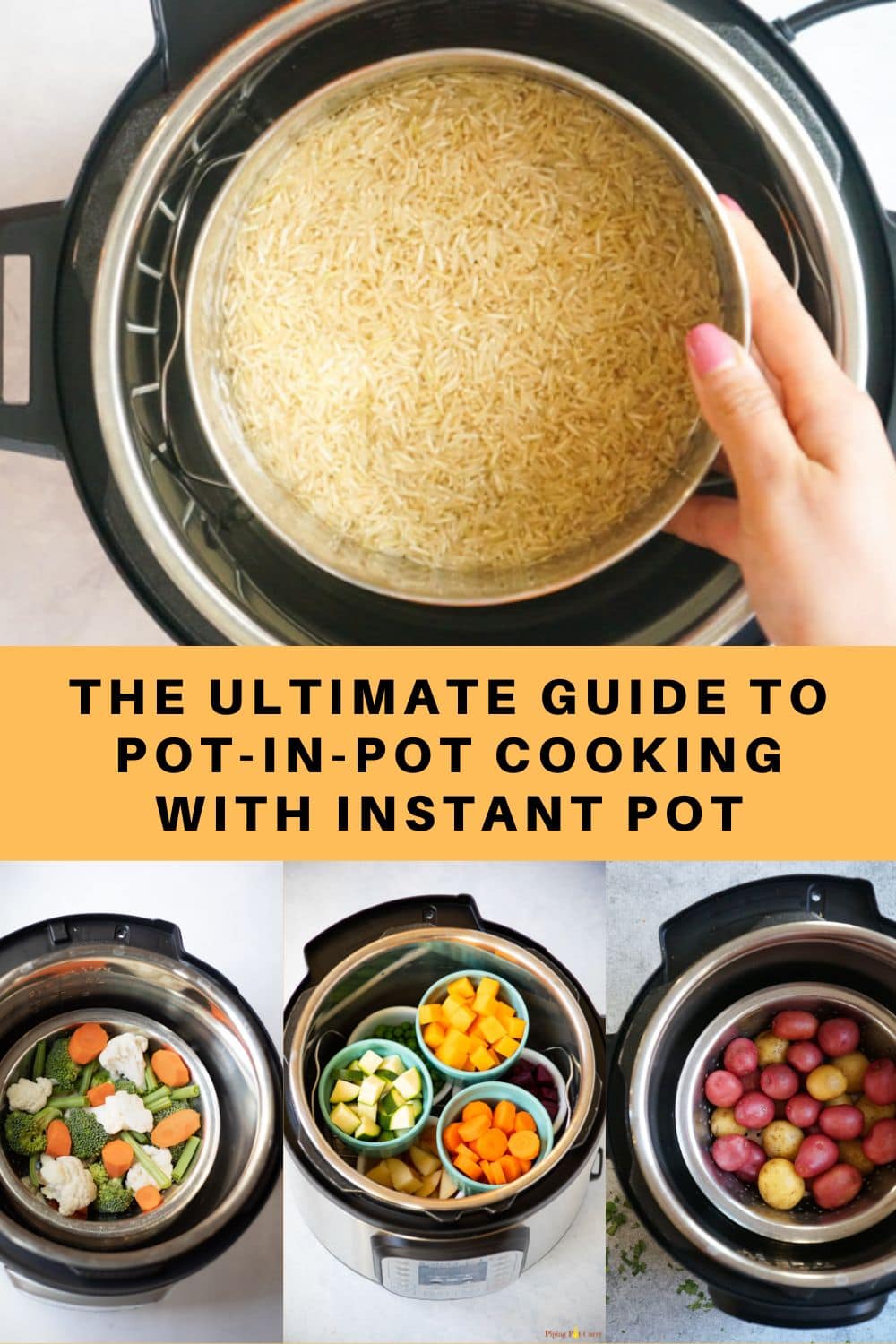
I have been in love with my instant pot since the day I bought it and wanted to put it to good use. And thereafter I started to read and experiment with the pot-in-pot cooking method and there has been no looking back ever since.
I use this technique all the time for everyday cooking – prep steamed vegetables or starches – rice, quinoa, oatmeal, when I am short on time, if I need to prepare individual portions, or if I need a quick dessert fix…….I can’t emphasize enough on how efficient this method is.
Table of Contents
- What is Instant Pot Pot-in-Pot Method?
- Pot-In-Pot Cooking Benefits
- When to Use Pot-in-Pot Method?
- How To Use?
- Accessories for PIP Cooking
- What Containers can I use?
- How to Use Pot-in-Pot to Cook Two Recipes Together?
- Pot-in-Pot Rice
- Boil Potatoes with Pot-in-Pot Method
- More Pot-in-Pot Recipes For You To Try!
What is Instant Pot Pot-in-Pot Method?
As the name suggests, a pot-in-pot (PIP) method is a cooking technique wherein you cook food in a small heat-proof pot inside the Instant pot’s inner steel pot/ container/ liner.
It is a practical and beneficial method that offers many more options for what you can cook. It saves time and makes cooking and cleaning a breeze.
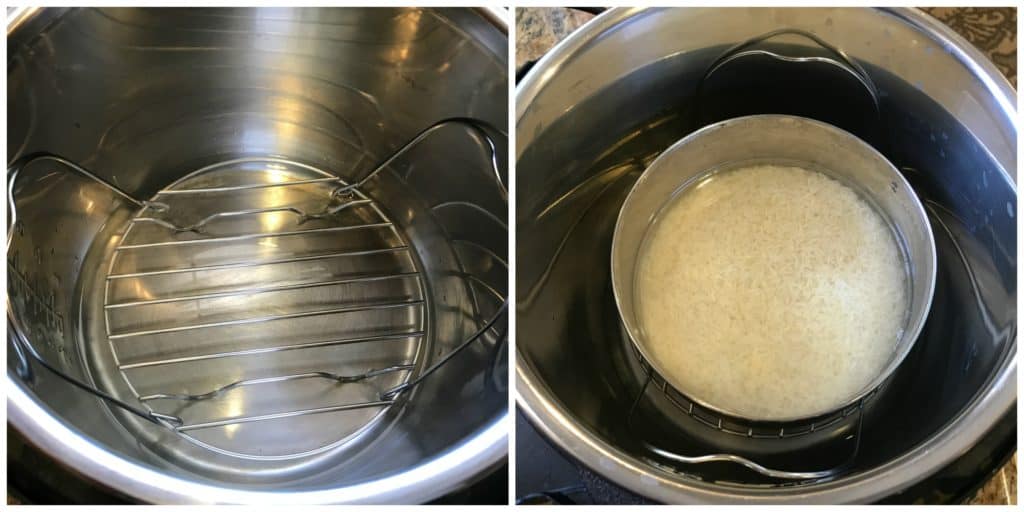
Pot-In-Pot Cooking Benefits
This technique offers many benefits and I am confident you be will a fan of PIP cooking when you start using this method.
- Cooking multiple dishes at once saves time and electricity
- Can be used to bake desserts so you don’t need an oven or air fryer
- Can be used for cooking recipes that don’t require liquid
- Great for reheating leftovers – can be done without microwave or stovetop
- There is no burn error – prevents scorching from heavy and dense sauces
- Rice cooked has a better texture
- Works well for steaming vegetables, seafood, and other delicate foods
- Quick cleanup
- Easy storage for smaller quantities of food
When to Use Pot-in-Pot Method?
1. Cooking multiple dishes at the same time
Utilizing the PIP technique to cook multiple dishes at once is one of the best reasons to use the instant pot. In fact, In India, a lot of people have been using this method to cook rice and dal/ sambhar or rice and chicken in the traditional stove top pressure cooker, much before the instant pots and electric pressure cookers started getting popular.
You can stack different layers of food like an entree and a side and cook them all at once in the Instant Pot rather than cooking everything separately in the inner pot.
See below cooking spinach dal with pot-in-pot rice.
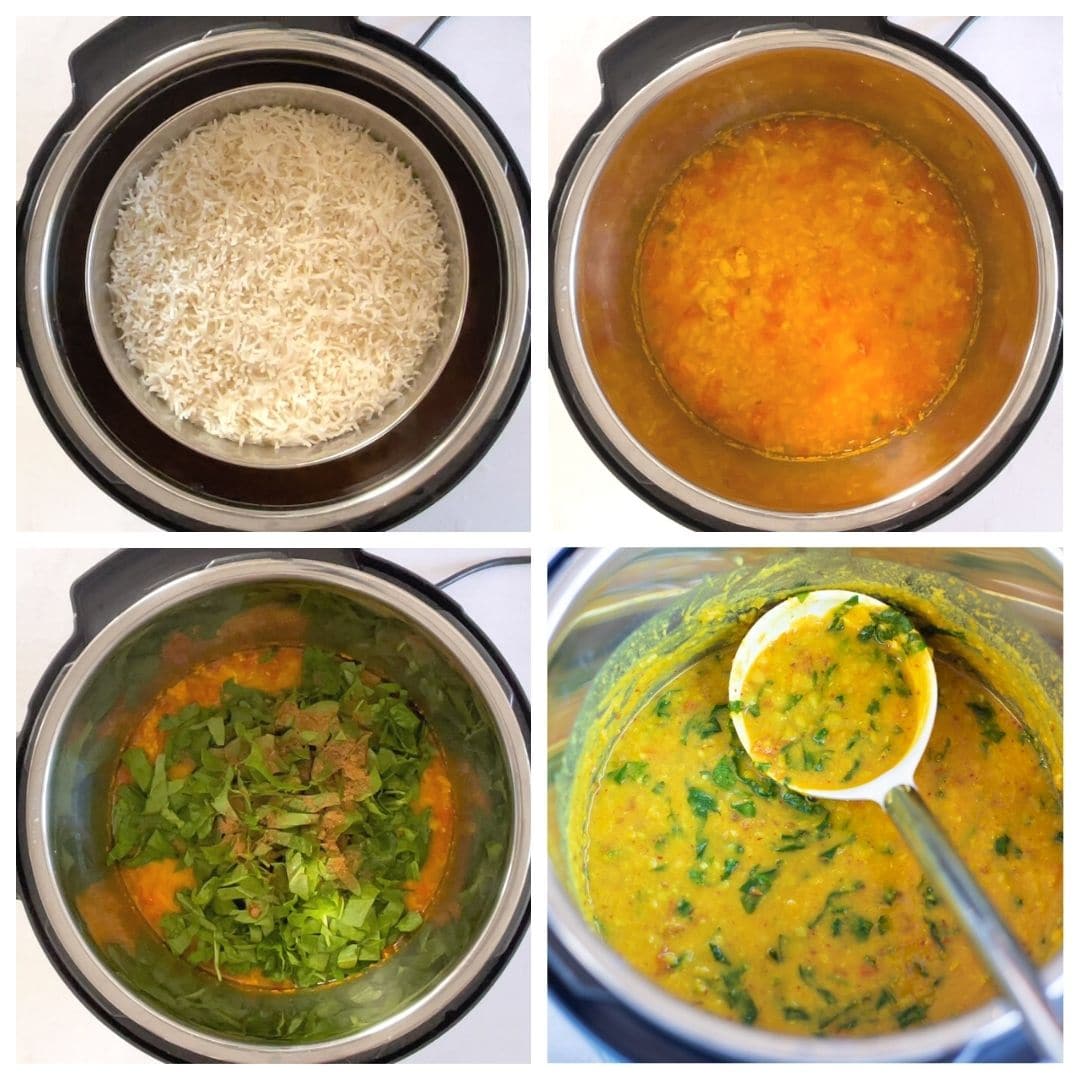
2. Bain-Marie Recipes
I am not sure if you already know this, but the Instant Pot liner with a bowl/ container on top works as a perfect Bain Marie.
So what is a bain-marie? It is nothing but a water bath that is used to gently cook delicate dishes such as custards, flans, cheesecakes, or a fondue, which require slow, indirect, but even heating to avoid burning or curdling.
The water acts as a barrier between the dish being cooked and the heat from the instant pot. I suggest you cover the smaller pot (with food) with a foil to prevent any moisture from getting in. My chocolate lava cake and banana bread pudding recipe uses this technique!
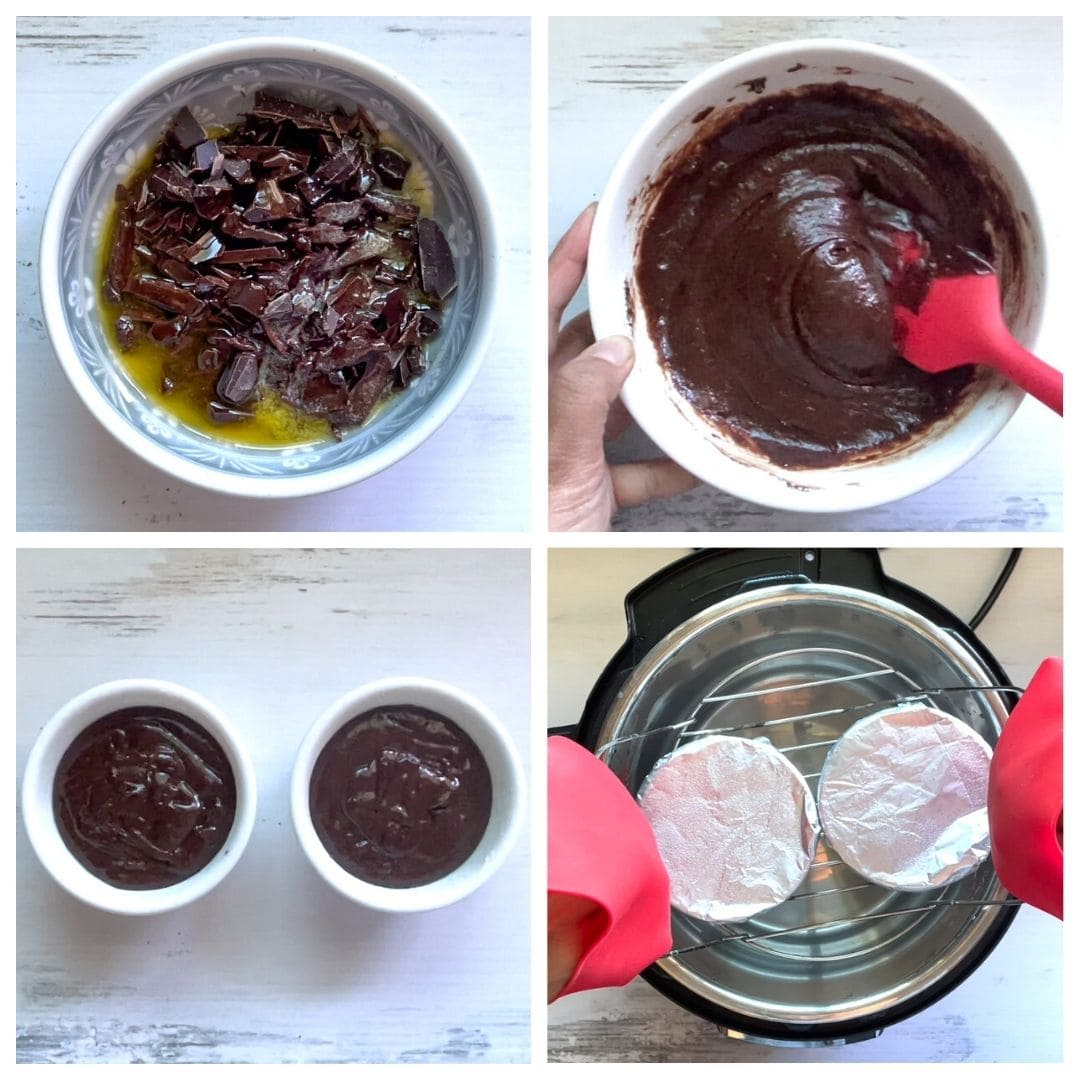
3. Pressure Steaming
To pressure cook in the Instant Pot, you need to use liquid. However, using the pot-in-pot method, you can cook food using steam instead of directly cooking in the liquid.
I am sure you will love this Spinach Artichoke Lasagna recipe cooked with pressure steaming.
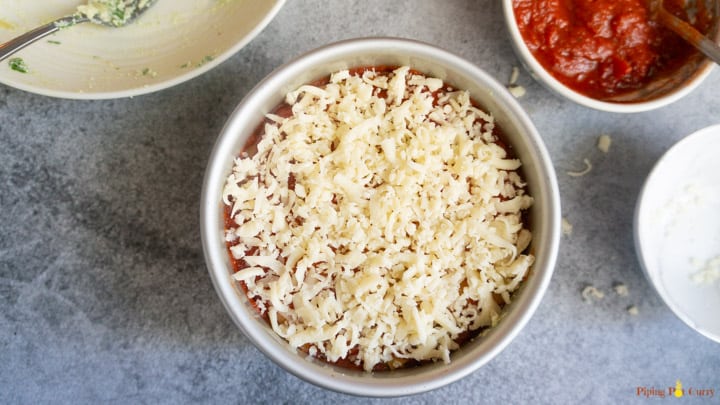
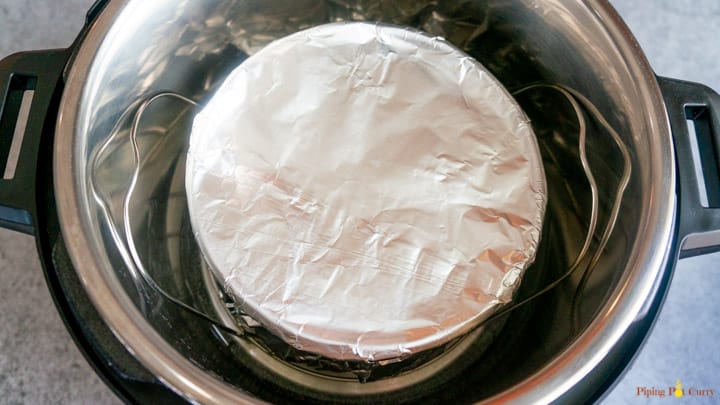

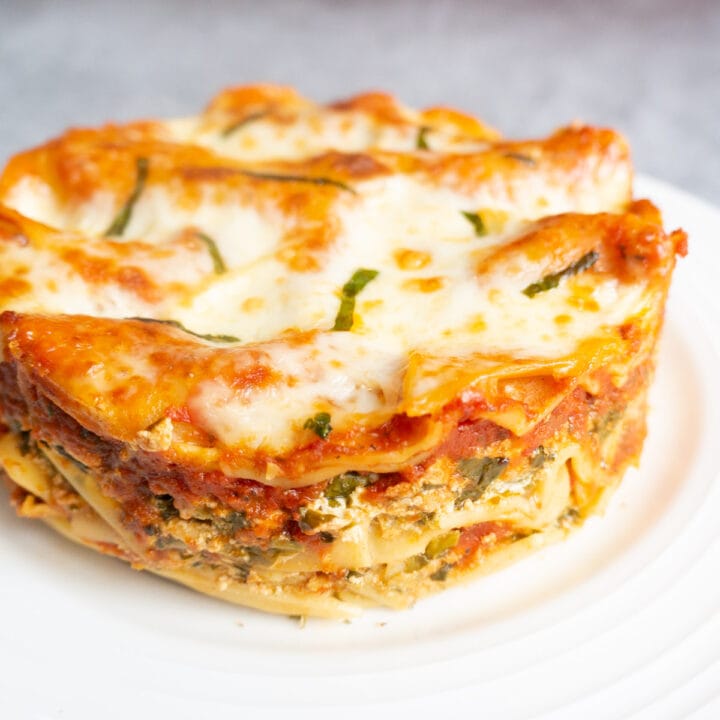
4. Prevent Scorching (Burn Error)
If you use your Instant Pot regularly, you have surely noticed the ”burn error” message on the display. If this happens, it simply means that the inner pot of the Instant Pot is too hot. Temperatures can reach 284°Fahrenheit. The “burn-protection” mechanism will then halt heating to stop food from burning.
Therefore, exercise caution when using ingredients that are more likely to cause the “Burn Error”—like milk or other dairy products (e.g., oatmeal in the instant pot), thick sauces/ curries, and tomato-based gravies.
By cooking these ingredients with the PIP technique, burn errors can be avoided. Just make sure you’re pressure cooking with enough liquid in the inner pot and that the venting knob is properly sealed.
5. Reheating Food
In the Instant Pot, pot-in-pot method is ideal for reheating food. You won’t have to worry about the food scorching, burning , or drying out.
Additionally, the food can be reheated in the same container in which you initially stored the leftovers, saving you the trouble of washing another pot or pan.
But remember that frozen food in a glass container should not be placed in the pressure cooker, as the glass can crack.
6. Steaming delicate foods such as vegetables, & seafood
Even with a steamer basket, cooking delicate vegetables and seafood directly in the inner pot runs the risk of overcooking them.
Cooking them in separate containers with PIP technique slows the cooking process. Simply fill the inner pot with water and place the food in a container / stackable pot on the rack. Covering the container with a double layer of foil or a lid also slows down cooking time.
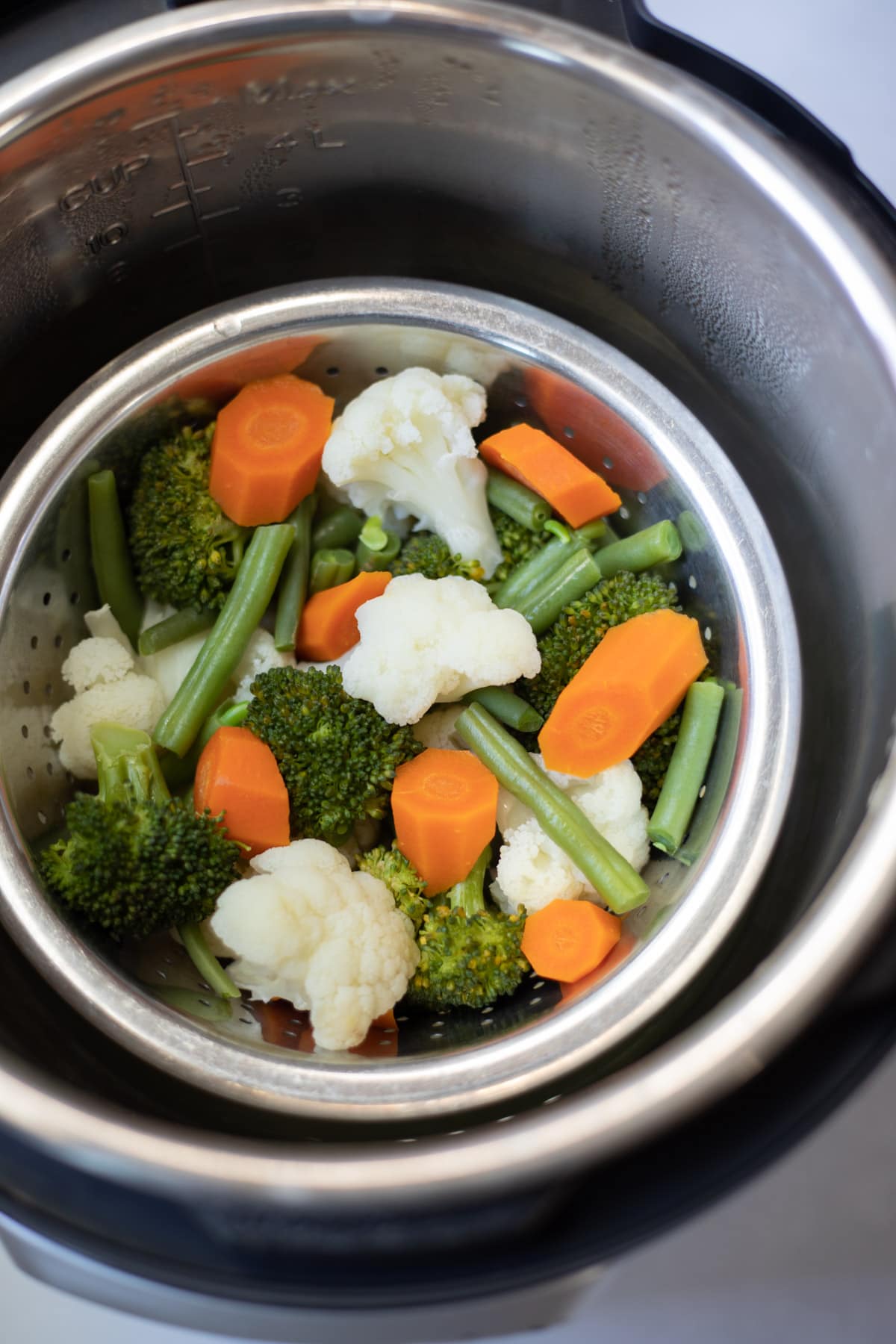
Take a look at some of my instant pot steamed vegetable recipes that you can cook using this method.
- Steamed Carrots
- Instant Pot Baby Food
- Steamed Cauliflower
- Steamed Broccoli
- Steamed Baby Potatoes
- Instant Pot Beets
7. Quick Cleanup
Although, you can cook foods right in the insert of the instant pot but, using the PIP method will make cleanup much simpler. This is particularly useful if you need to cook several dishes in quick succession using the Instant Pot.
Another advantage is that food can be served straight from the smaller pot and the leftovers can be stored in the same container – doesn’t that save you from a lot of cleaning?
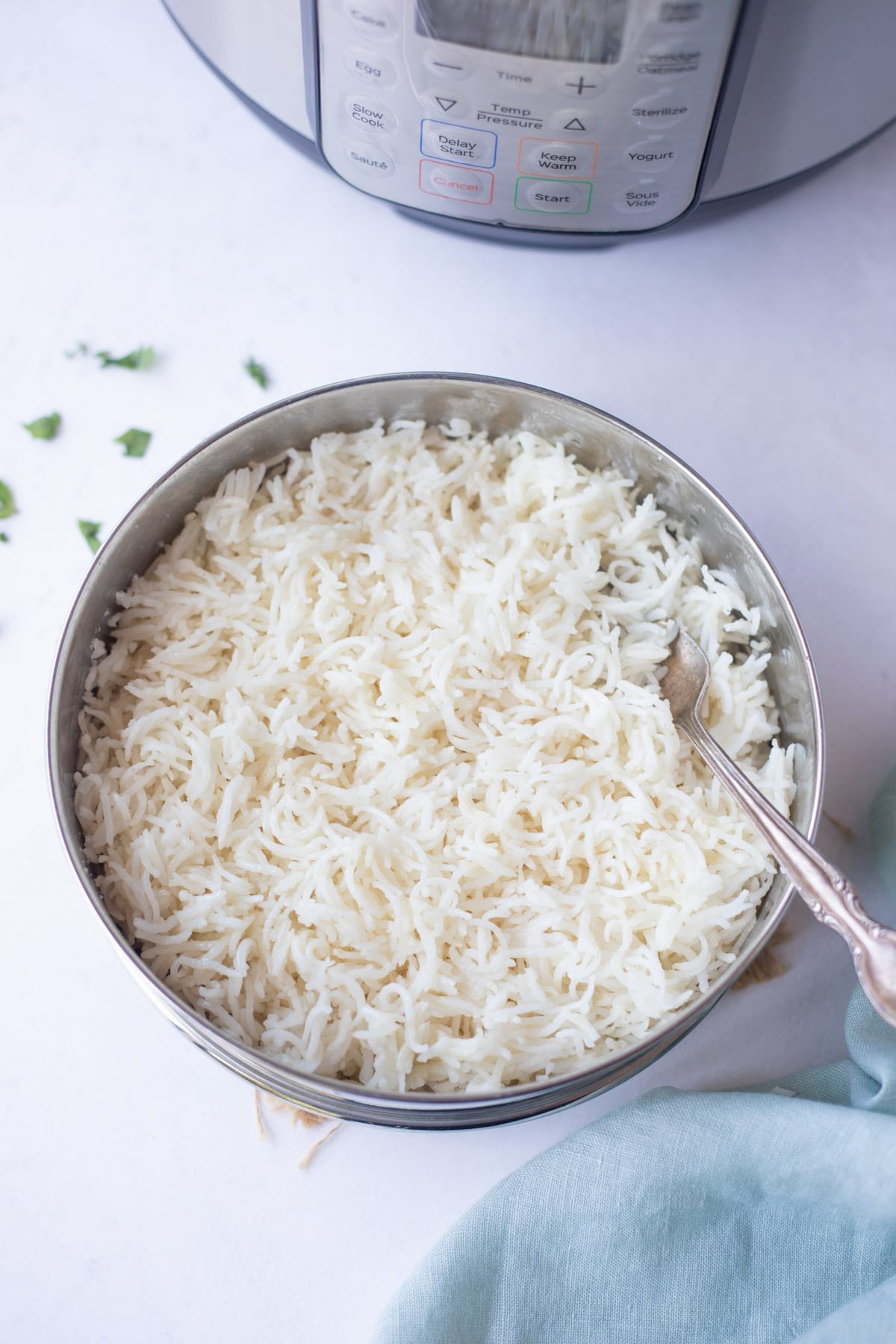
How To Use?
This method is actually quite simple to implement. Read on to learn the process and get the pro tips to go about using this technique.
- To begin, you must fill the inner pot/ liner with 1 cup of water.
- Then place the long-legged trivet or a steam rack in the water.
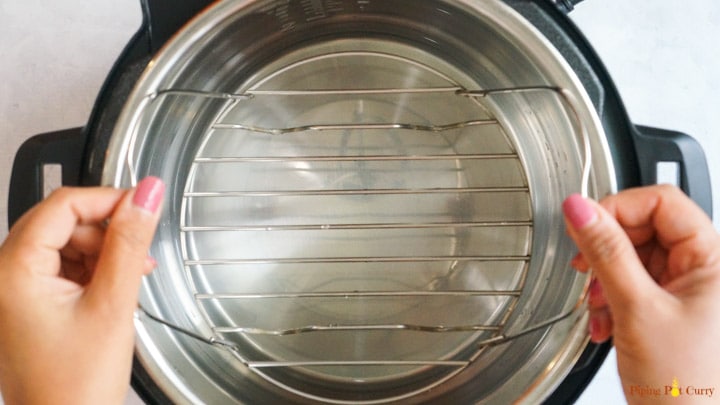
- The food that needs to be cooked is taken in an oven-proof container or a stainless steel bowl. Add liquid/ broth to this small bowl only if it is required in the recipe. You can cover this pot with a lid or a foil but it isn’t necessary, and depends on the recipe.
- Now, place this container on top of the trivet.
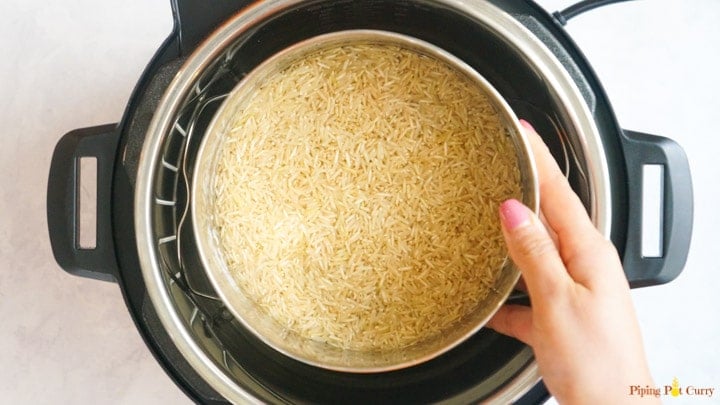
- Secure the lid of the instant pot. Press the manual or pressure cook button, then set the time to the amount specified in the recipe.
- Depending on the recipe, perform a quick or a natural release when your instant pot beeps.
- It’s done….your meal is ready to serve.. isn’t that super easy!
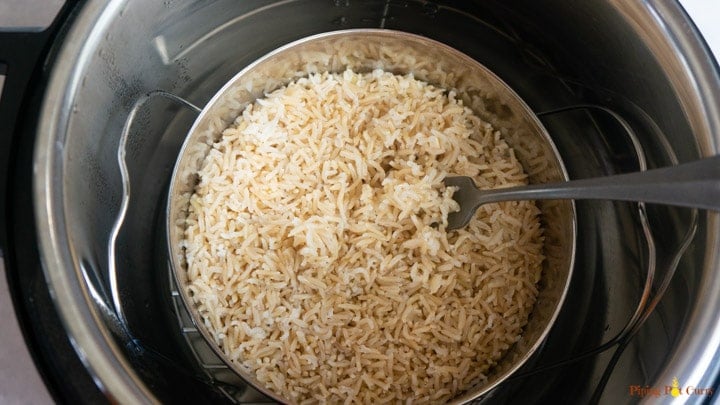
Do Not Forget – Add Liquid
DO NOT FORGET to fill water in the base of the instant pot insert when using the pot-in-pot method. There should be liquid in the bottom of the pot when cooking a sauce or a curry dish at the same time.
If you’re only using the raised pot for cooking, make sure to fill the insert with water before you start. If not, the pot will heat up and the burn warning will be displayed.
This obviously entails spending a significant amount of time scrubbing and cleaning your instant pot insert.
Adjust Timing
Food cooked in a raised pot using the pot-in-pot technique takes a little longer to cook than food cooked in the main insert because the food is not exposed to the direct heat at the pan’s bottom.
Remember to adjust the timing; generally speaking, cooking with PIP method takes a couple of minutes longer than cooking with the main insert.
Accessories for PIP Cooking
You actually do not require a lot of accessories for Pot-in-pot cooking. The following are some of the necessities you will require:
- Oven- Proof Dish/ Bowl: Make sure your container fits inside your instant pot’s liner. This oven-proof pot will contain your food that needs to be cooked. The container should not touch the inner pot’s walls and should allow the instant pot lid to close easily.
- Trivet/ steaming rack: Generally, you use this trivet/ rack to lift up your smaller container away from the bottom of the inner pot. So, basically, the small pot isn’t kept directly in the inner pot. There are many different kinds of racks available. A high trivet is ideal if you want to cook multiple dishes at once.
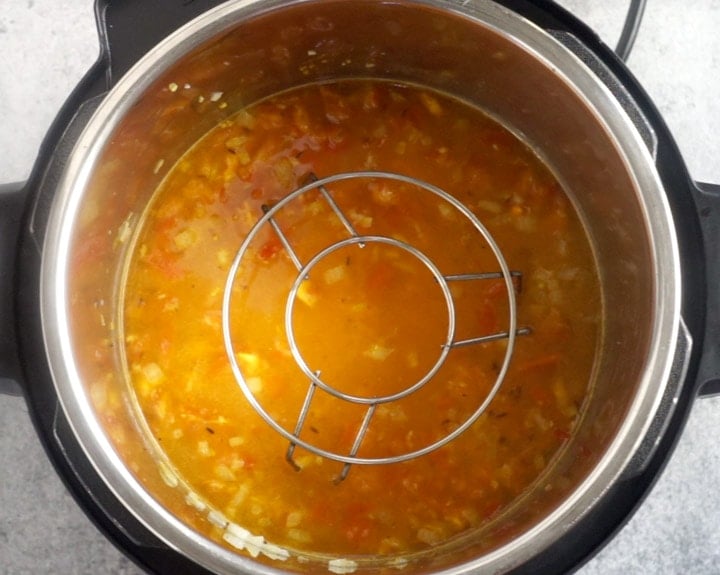
Besides these, some of the optional accessories that are good to have are – stackable stainless steel multitiered containers, a flat wire rack, and a silicone sling (you can make a foil sling if you don’t have a silicone one) etc.

But I highly recommend that you use silicone gloves/ long mitts and tongs for handling hot food when using the PIP method. So, there is absolutely no compromising with safety.
What Containers can I use?
You must be wondering what are the best containers that you can use for the PIP method.
There are numerous options available for the pot-in-pot method. Instant pot-safe bowls can be made of stainless steel, glass, ceramic, silicone, aluminum, bamboo, or copper.
But one thing to keep in mind is that heat is transferred differently in different containers depending on factors such as material, size, and thickness. As a result, the optimal cooking time will depend upon the container you use.
So ensure to adjust the cooking time based on your container. Otherwise, you risk overcooking or undercooking your food.
My Recommended Container Material
I highly recommend using a sstainless steel bowl for pot-in-pot cooking. If using a glass bowl, make sure it is oven safe and approved for pressure cooking. You will need to add 3-4 minutes more cooking time with a glass bowl.
For PIP cooking, silicone cupcake liners, ramekins, stainless steel bowls, a springform pan, or even a casserole dish are all acceptable substitutes and you really do not need to buy a special container. You may already have a few of these lying around the kitchen.
Here is my detailed post about my favorite instant pot accessories.
Can I Use Pyrex In The Instant Pot?
Pyrex in the instant pot is generally safe to use. However, before use, you must make sure it is not chipped, cracked, scratched, or broken.
All safety precautions for Pyrex, such as avoiding sudden temperature changes, must be followed as it can shatter easily. Some tips to keep in mind are:
- Never put hot Pyrex directly on a wet or cold surface like the countertop, in the sink etc.
- Handle hot Pyrex with a dry towel or potholder.
- Allow the hot Pyrex container to cool on a cooling rack, or dry towel before washing, refrigerating, or freezing it.
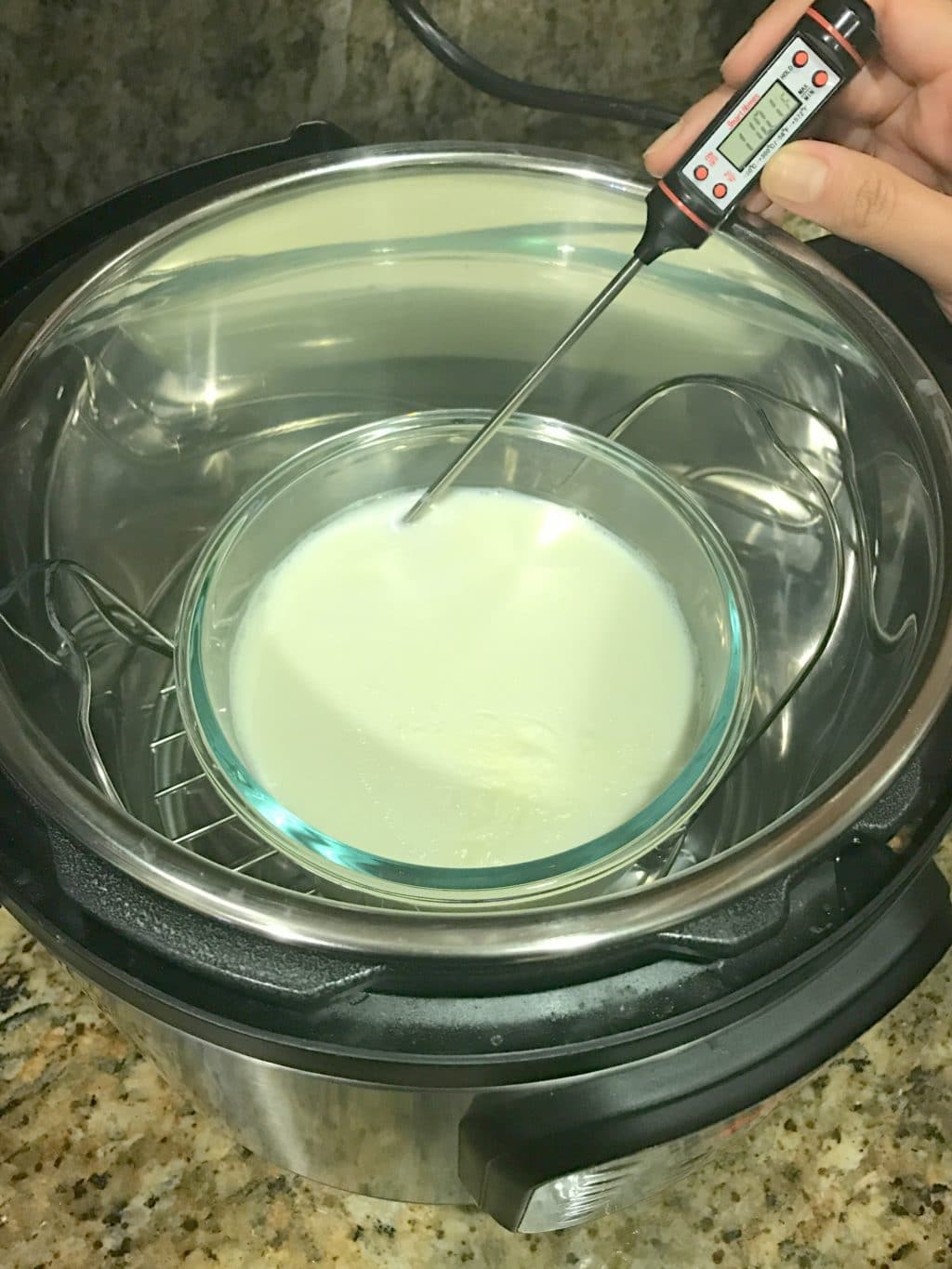
How to Use Pot-in-Pot to Cook Two Recipes Together?
Here are some things you need to keep in mind when cooking two recipes together using PIP.
- Try to cook items with similar cooking time e.g. You can cook chicken and brown rice together but not cauliflower and brown rice.
- To hasten cooking times, you should cut your food into smaller pieces. Chicken cut into small pieces will cook faster than bigger chunks or whole chicken.
- The right placing is important – the food that takes longer to cook must go in the instant pot insert and the food with shorter cooking time must be on top.
Some foods you can cook together
- Chicken curry / butter chicken and white rice
- Fish and white rice
- Thai tofu curry and Jasmine rice
- Dal/ lentils and Basmati rice
- Meatballs and pasta
- Dry, soaked beans (kidney, chickpeas) and brown rice
How to use pot-in-pot method if you have to cook foods that require different times?
Here’s how you can do this:
- Cook the longer cooking item partially, then rapidly do a pressure release, add the second dish, and then continue to cook both dishes. For instance, if it takes 20 minutes to cook lentils/ dal and 10 minutes to cook rice, you would pressure cook the dal for 10 minutes, perform a quick pressure release, open the lid, add the rice container (which could be stacked or placed on a rack), and then shut the instant pot lid.
- The other option is to wrap the container of the faster-cooking food in a double layer of aluminum foil and seal it tightly. The cooking of the contents is slowed down by the foil.
- Reduce the cooking time of the slower-cooking item (e.g. meat) by cutting it into smaller uniform pieces.
- To slightly shorten cooking time, use a glass, ceramic, or silicone container to cook the item that cooks more quickly instead of a stainless steel pot.
When cooking two different dishes in one pot, there are some things to keep in mind that are common to both, such as:
- Cooking time
- Pressure level (low or high pressure)
- Quick release (QR) or natural pressure release (NPR) method of pressure release
It’s best to avoid the following foods as they have varying cooking times.
- Whole chicken and white rice
- Brown rice and fish
- Dry, soaked beans and white rice
But when you have mastered the cooking time and the pressure release, you can try these and experiment with your own family-favorite combos!
Pot-in-Pot Rice
When I make a curry, lentils, or beans in the instant pot, I always serve it with pot-in-pot rice. That way we can have dinner ready to be served in one go.
I use a tall trivet and stainless steel container to cook my rice and I have been pretty happy with the results.
The time to cook the rice varies based on the variety. It takes about 6 minutes to cook long-grain white rice like basmati rice and can take around 20 minutes to cook brown rice
After cooking, allow the pressure to naturally release for 10 minutes before releasing any remaining pressure. Carefully remove the rice pot and fluff it with a fork. Cover and set aside for a few minutes if the rice isn’t completely tender.
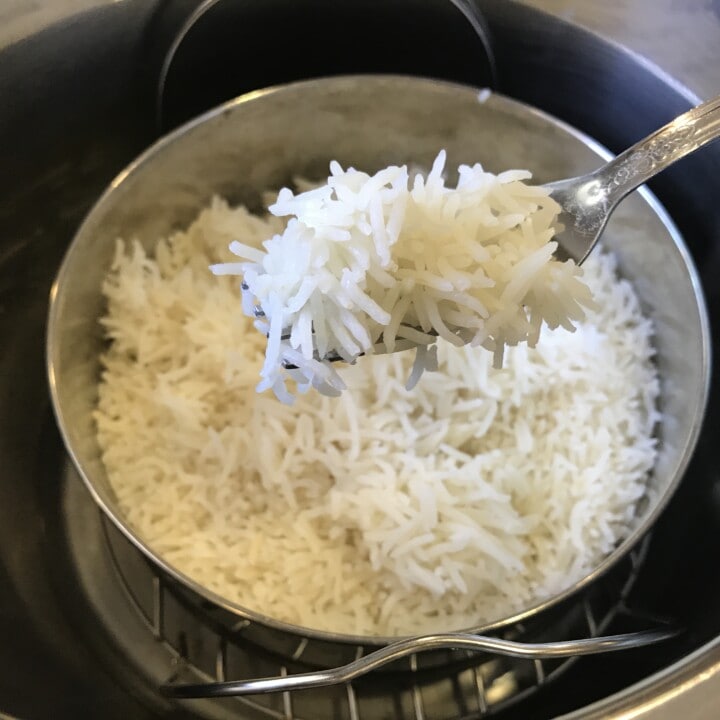
I have a few more options for rice and other grain recipes for you to try:
Boil Potatoes with Pot-in-Pot Method
I love cooking potatoes with the PIP method. You can cook new or baby potatoes above other dishes in mere 6-8 minutes.
The larger potatoes can be pressure cooked directly on the rack in dishes with longer cook times. Once you have cooked potatoes handy, you can use them in any form – make a curry, or stir fry etc. Check out here on how I boil my potatoes in instant pot.
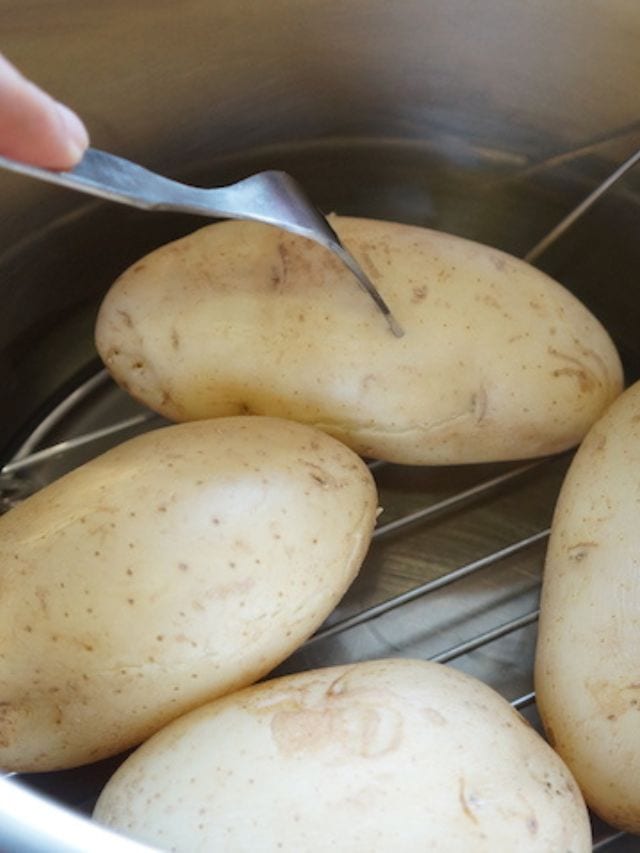
More Pot-in-Pot Recipes For You To Try!
- Instant Pot Quinoa
- Chicken Tikka Masala
- Indian Dal Tadka
- Coconut Chickpea Curry
- Dal Makhani
- Khaman Dhokla (Savory Chickpea Flour Cake)
- Orange Semolina Cake
- Very Berry Bread Pudding
- Banana Bread Pudding
- Brownies
- Homemade Yogurt
- Salmon Tikka Masala
- Instant Pot Steel-Cut Oats
Give these pot-in-pot recipes a go. You’ll be amazed at how amazing this technique is and that you can serve some of your favorite dishes in one go!
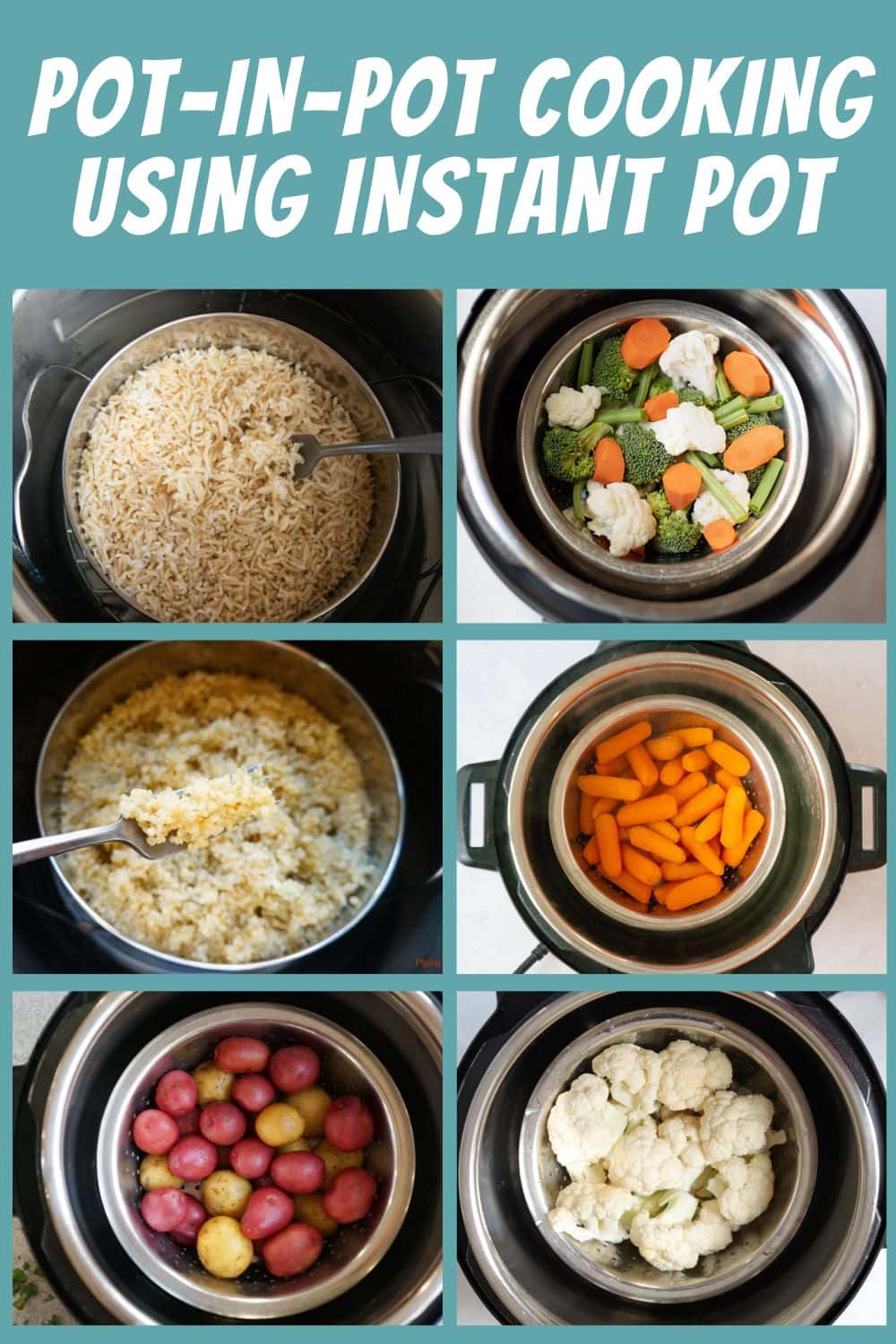
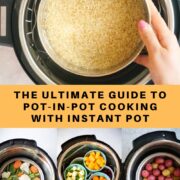
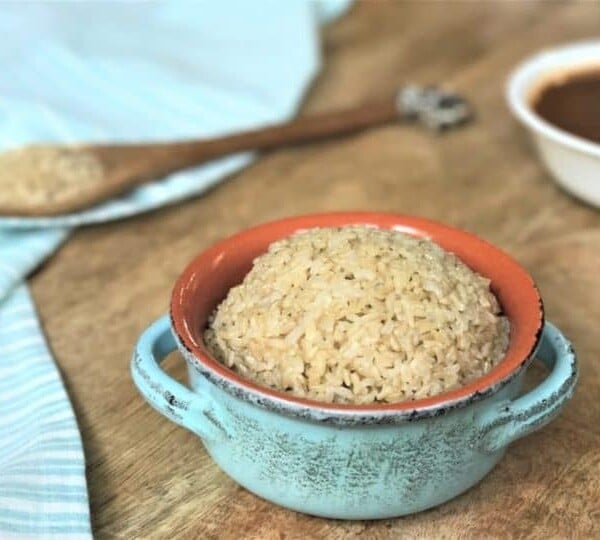
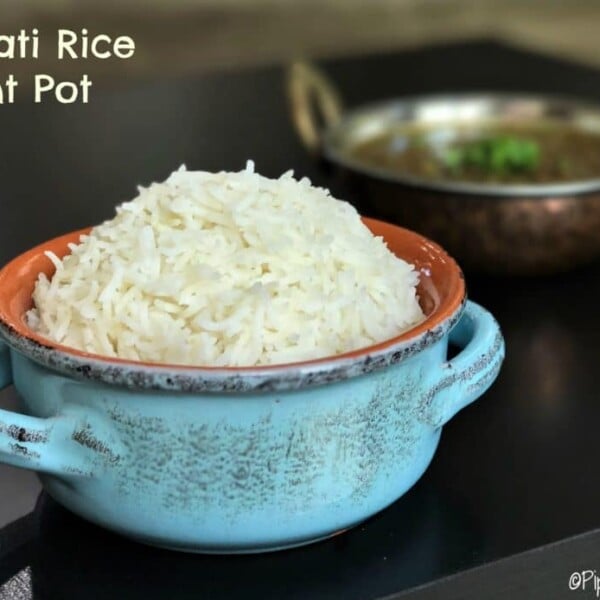

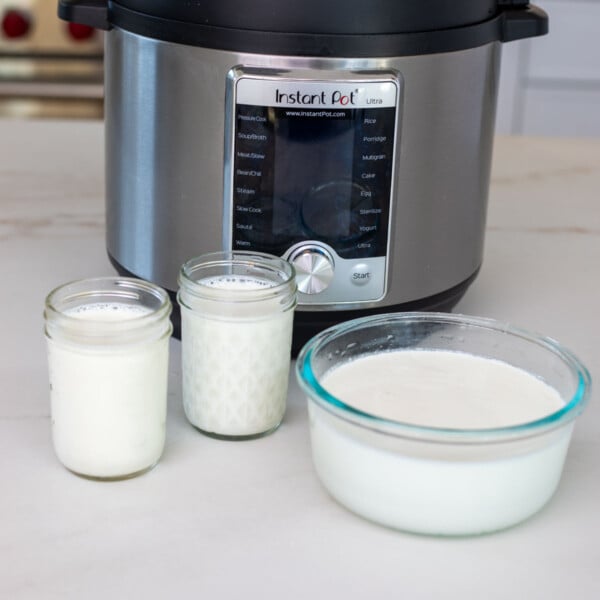








Thanks, Meeta,
I have been using pint jars on a trivet as an inside pot to put my food in. Four jars fit in my 6-quart Instant Pot. Jars can be prepared ahead of time before cooking or after cooking and stored in the refrigerator.
Your pot in pot cooking has changed my attitude about the instant pot. Now I try to use the pot for everything. Are there charts for pot in pot cooking for various grains and beans? I am new to sorghum and would like to use pot in pot method for that.
Hi Lee – I am glad you are enjoying the pot-in-pot method. I have not tested, but I would suggest to try 35 minutes high pressure for pot-in-pot for sorghum.
Thanks for this detailed post. I’m new in PIP and find it can be very interesting for saving time-effort in cooking. Have a nice day
A 1500 ml backpacking pot with lid made of titanium is the perfect pot-in-pot. Mine has only a small vent. I cover to dry roast where direct exposure to steam would cause sogginess and to heat foods taken from microwave packages. Titanium has good heat transfer but won’t burn you when handling because it does not store heat. I use it daily with the silicone sling. Pot-in-pot conserves the juices of meat chicken and fish. The method reduces the chance of overcooking while boosting tenderness and flavor.
Do you know – if I am using the stackable pots (they take up almost the entire inner pot!), do I put those directly on the bottom of the inner pot, or do I put them on the trivet to elevate them out of the water slightly?
Hi Elizabeth – I usually use one of the containers (from the stackable set) along with cooking a curry/lentil in the main pot. I prefer to elevate the containers on the trivet that came with the instant pot, so they are not completely touching the bottom of the steel insert.
l treated myself to a set of Ekovana stackables for Christmas. They came with 2 lids. One solid and the other with vent holes. What is the proper way to use either?
Hi Elvin – For most cooking, I actually don’t use the lids for cooking a much. Even when cooking pot-in-pot rice, I usually don’t use a lid. That said, the lid with holes can be used when steaming veggies or cooking rice.